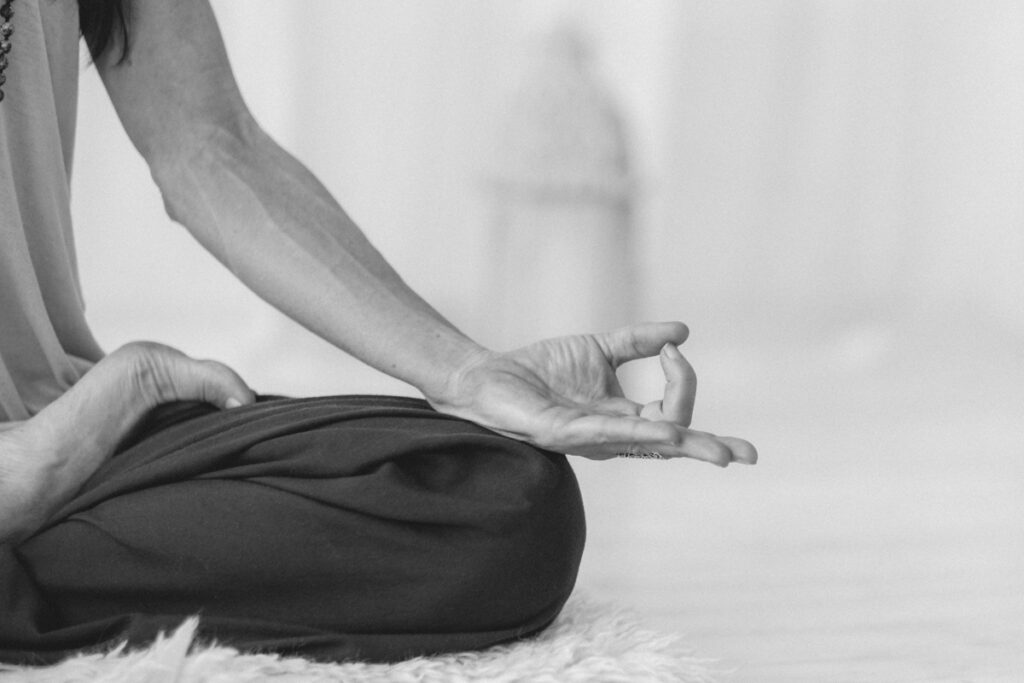
Mantras have been used for spiritual growth and inner peace for thousands of years.
Mantra
A mantra is a sacred sound, word, or phrase with a powerful vibration capable of transforming the mind and spirit. The word "mantra" comes from the Sanskrit words "man," meaning mind, and "tra," meaning instrument or tool. A mantra is an instrument for focusing and calming the mind, allowing us to go beyond our thoughts and connect with a higher consciousness. Mantras can be simple sounds or complex phrases, and when repeated with intention, they can clear the mind, center the soul, and open pathways to spiritual awakening.
Chanting
Chanting, the practice of repeating a mantra aloud, is one of the most common ways to engage with these sacred sounds. The repetition of a mantra through chanting is not only a mental exercise but also a deeply spiritual practice. As we chant, the vibrations of the mantra ripple through our body, shifting our energy and helping us to release mental clutter. The chanting rhythm has a calming effect, bringing our awareness to the present moment and creating a deep connection. It is a form of meditation in motion, where the voice, breath, and mind align, creating a space of stillness and peace.
Kirtan
Kirtan is a specific chanting form often performed in a group setting. It is a call-and-response style of chanting that originated in ancient India and is still widely practiced today. In a kirtan, a leader sings a mantra or sacred phrase, and the rest of the group responds in union. This back-and-forth exchange creates a dynamic and interactive energy, allowing the participants to feel a deep sense of communion with each other and the divine. Kirtan is usually accompanied by instruments, such as drums, tambourines, and harmoniums, which enhance the rhythm and create a joyful, uplifting atmosphere. The instruments and the participants' voices amplify the sound and help create an energetic field that can be felt on a deep, physical level.
The practice of kirtan is more than just singing—it is a celebration of the divine energy within and around us. We release our egos and surrender to the shared experience through collective chanting. Kirtan opens up a space for emotional healing, spiritual awakening, and a deeper connection to the universe and each other. As we chant together, we tap into the power of sound and vibration, experiencing a sense of unity and love that transcends words.
Singing mantras around a bonfire adds more magic to the practice. The fire symbolizes transformation, purification, and illumination. As the flames dance and crackle, the mantras' energy merges with the fire's warmth and light, creating an experience that is both grounding and expansive. The combination of the chanting and the natural elements offers a unique opportunity to connect profoundly with nature, the universe, and the spirit. The circle of people gathered around the fire, singing together, creates a sense of community and shared intention, amplifying the healing and transformative power of the mantra.
In the end, the power of the mantra lies in its simplicity and ability to bring us back to our true selves. Whether new to chanting or have been practicing for years, singing mantras in a group creates a sacred space where transformation can occur. Through kirtan and the collective power of sound, we are reminded of our interconnectedness and our shared journey toward peace, love, and harmony. The mantra's vibrations, the chant's rhythm, and the group's unity offer a beautiful opportunity to experience inner peace and deep connection.
6 Powerful Mantras:
Om
The most universal mantra, Om, is the sound of the universe, representing the connection between all living beings. Chanting Om can help you align with the flow of universal energy and find inner peace.
Om Mani Padme Hum
This Tibetan mantra, "The jewel is in the lotus," is associated with compassion and heart healing. It invites love, kindness, and balance into your life.
So Hum
Translated to "I am that," this mantra reminds you of your oneness with the universe. It helps you connect with your true nature and creates unity and harmony.
Gayatri Mantra
The Gayatri mantra is a prayer for wisdom and enlightenment. It calls upon the divine light to illuminate the mind and lead us on the path of truth and knowledge.
Lokah Samastah Sukhino Bhavantu
This mantra translates to "May all beings be happy and free." It is a beautiful invocation of peace and good wishes for the well-being of all, helping to cultivate love and compassion for yourself and others.
Om Namah Shiva
This mantra honors Lord Shiva, the destroyer of ignorance and ego. Chanting "Om Namah Shivaya" invokes transformative energy, helping to remove obstacles, purify the mind, and bring spiritual growth.
Here, you can read my blog post about "Namaste."
Join us for a Kirtan Bonfire in Moldemarka 30. March at 16:00!
Let's come together to enjoy the warmth of the fire, the power of chanting, and the peaceful energy of nature. All are welcome to share this special moment of connection and joy.
Registrations: send email to: mittpille@gmail.com
Bli med på Kirtan Bonfire i Moldemarka 30. mars, kl. 16:00!
La oss samles for å nyte varmen fra bålet, kraften i chanting og den fredfulle energien fra naturen. Alle er velkomne til å dele dette spesielle øyeblikket av samhold og glede.
Meld deg på email: mittpille@gmail.com
Savasana, or Shavasana, is the Sanskrit name for an essential restorative asana. It is a key component of asana practice in almost every yoga tradition. It is most commonly used at the end of a sequence for relaxation and integration. However, it is also powerful as a stand-alone exercise to restore balance and combat stress. Some schools also use it to calm the body and mind at the start of a class and to learn and practice yogic breathing. In Yin Yoga, Restorative Yoga, Sivananda yoga class, and Yoga Therapy, Shavasana is sometimes practiced between postures to calm the nervous system.
The term is derived from two Sanskrit roots: shava, meaning "corpse," and asana, meaning "seat" or "posture." The first written record of savasana is found in a classic 15th-century yoga text, Hatha Yoga Pradipika, which says: “Lying down on the ground, like a corpse, is called savasana. It removes fatigue and gives rest to the mind”.



The Symbolism of Shavasana
In yoga philosophy, Shavasana represents a symbolic death. By letting go of physical and mental tension, practitioners "shed" their old selves and emerge renewed, much like a rebirth. It is an opportunity to release the ego and experience the interconnectedness of mind, body, and spirit. Shavasana is a profound surrender of the present moment, letting yourself be and meditating on that.
Scientific Perspective
Modern research supports the benefits of Shavasana, particularly in stress management. Studies show that practicing Shavasana can lower blood pressure, reduce heart rate, and decrease stress hormones like adrenaline and cortisol. It is also used in therapeutic settings to manage conditions such as anxiety, depression, and chronic pain.
Shavasana, or Corpse Pose, is a highly effective tool for activating the parasympathetic nervous system (PNS). This activation is critical in balancing the body and mind, especially in today’s fast-paced, stress-driven world.
The parasympathetic nervous system (PNS), often called the "rest-and-digest" system, plays a vital role in the body’s ability to heal. When the PNS is activated, it shifts the body out of the "fight-or-flight" mode dominated by the sympathetic nervous system (SNS) and into a state of relaxation and recovery. This activation lets the body focus on repair, restoration, and overall well-being.
How to practice Shavasana
Set Up Your Space: Choose a quiet and comfortable area. Use a yoga mat or a blanket for cushioning. Place a small pillow under your head or knees to ease neck or lower back tension.
Lie Down Comfortably:
- Lie flat on your back with your arms extended slightly away from your body.
- Palms should face upward, fingers naturally curling.
- Legs are straight, and feet fall naturally to the sides. If you feel discomfort in your lower back, place a bolster or rolled blanket under your knees.
Align Your Body:
- Ensure your spine is in a neutral position.
- Adjust your head so your neck feels lengthened, and avoid straining to either side.
Close Your Eyes and Breathe:
- Allow your eyes to close gently and your facial muscles to relax.
- Breathe naturally, noticing the flow of air without trying to control it.
Relax Every Part of Your Body:
- Mentally scan your body from head to toe, releasing any tension you may be holding.
- Start with your face, jaw, and shoulders, and gradually move down to your fingers, abdomen, legs, and toes.
Be Present:
- Focus on the sensations in your body, the rhythm of your breath, or simply the feeling of stillness.
- If your mind starts to wander, gently guide it back to your breath or physical sensations.
Stay Still:
- Remain in Shavasana for 5–15 minutes, depending on your schedule and needs.
- When you're ready to come out, deepen your breath, wiggle your fingers and toes, and roll onto one side before slowly sitting up.

Benefits of Shavasana
Physical Relaxation:
- Shavasana helps release muscular tension and allows the body to recover from physical exertion. This is why it is often practiced at the end of a yoga session.
Mental Clarity and Stress Relief:
- Shavasana calms the nervous system, reduces cortisol levels, and relieves mental fatigue by practicing conscious relaxation. Chronic stress impairs immune function, increases inflammation, and slows healing. By reducing stress hormones, the PNS creates a more favorable environment for healing.
Improved Concentration:
- Regular practice enhances mindfulness and concentration, making it easier to focus during daily tasks.
Enhanced Self-Awareness:
- Shavasana allows you to connect with your inner self, fostering greater self-awareness and emotional balance. Mind-body awareness helps individuals listen to their body’s needs, make healthier choices, and actively participate in their healing process.
Better Sleep:
- The deep relaxation experienced in Shavasana can improve sleep quality by helping to reset the body's stress response. Sleep is critical for healing because it’s when the body focuses on cellular repair, hormone regulation, and immune function.
Supports Healing:
- It activates the parasympathetic nervous system (rest-and-digest mode), promoting healing and restoring the body's natural balance. Chronic stress impairs immune function, increases inflammation, and slows healing. By reducing stress hormones, the PNS creates a more favorable environment for healing.
Though it may appear simple, Shavasana is a profound and transformative practice. It teaches us the art of relaxation, letting us let go of physical and mental burdens and connect to a more profound sense of peace. Whether you are a seasoned yogi or a beginner, embracing Shavasana can bring balance, clarity, and a sense of renewal. So, the next time you step onto your mat, remember that the stillness of Shavasana is just as valuable as the movement in any other pose.
"Namaste" has transcended its origins in India to become a globally recognized greeting, often heard in yoga studios, meditation spaces, and wellness communities. At its core, "namaste" carries a profound sense of respect, connection, and spirituality that speaks to both the individual and the universal. But what does this ancient word mean, and how has it evolved in its usage worldwide?
The Meaning of "Namaste"
The word "namaste" comes from the Sanskrit language, where it is a combination of two key elements: "namah," meaning "bow," and "te," meaning "to you." Together, the phrase translates to "I bow to you," but the sentiment goes much deeper than a simple physical gesture.
In spiritual terms, "namaste" is often interpreted as "the divine in me honors the divine in you." It acknowledges that something sacred within each individual is an essence or light that transcends the physical and connects us all. In this sense, "namaste" recognizes the shared humanity and divinity between individuals, fostering a sense of unity and mutual respect.
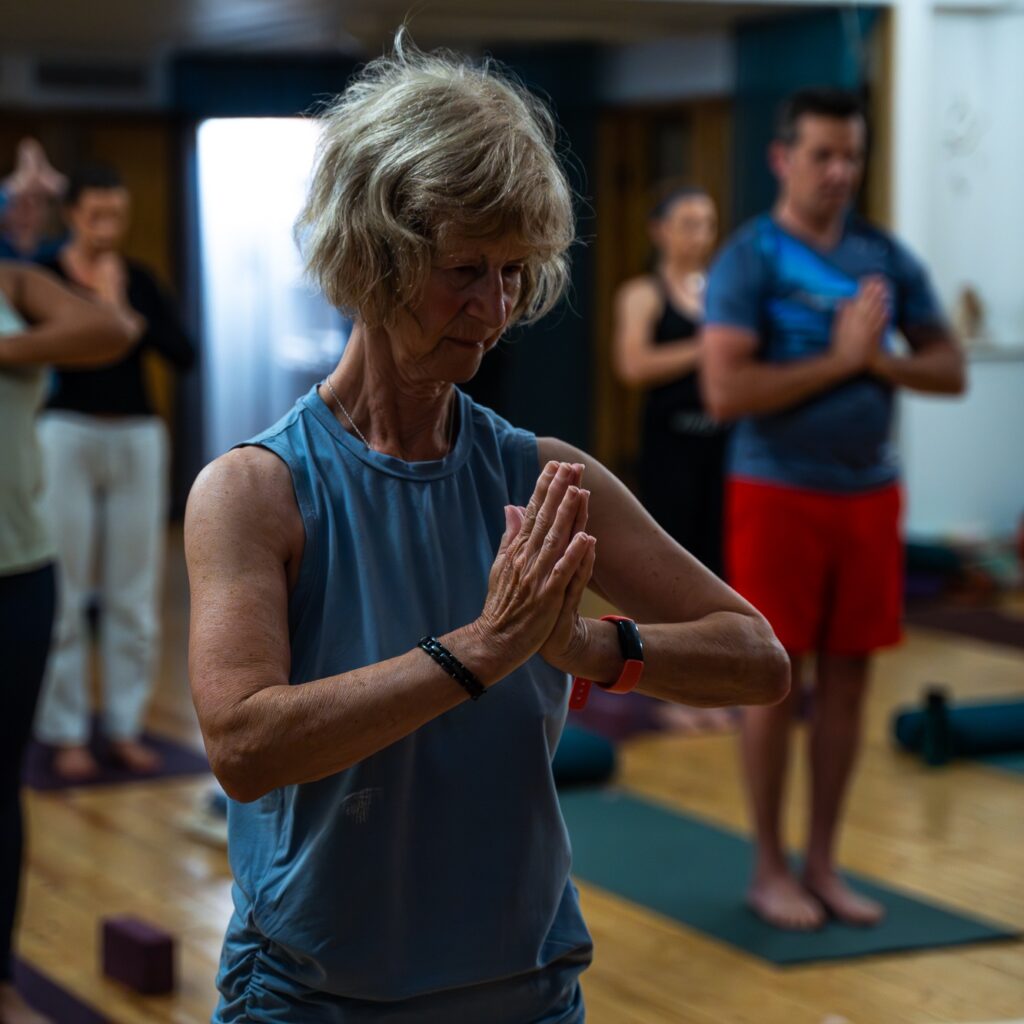
The Gesture: More Than Just a Word
In India and other parts of South Asia, "namaste" is accompanied by a gesture that involves placing the palms together in front of the chest, with the fingers pointing upward and the thumbs close to the heart. This gesture is called "Anjali Mudra" in yoga and represents a prayerful posture of humility and gratitude. When performed with the word "namaste," the gesture becomes a physical expression of reverence and respect.
Traditionally, this greeting is used in both formal and informal settings in India. It is expected to say "namaste" when meeting someone for the first time and when departing. In rural areas, elders and respected individuals are greeted with this gesture as a sign of deep respect.
Namaste in Yoga and Wellness
In the West, "namaste" has gained popularity through its association with yoga and meditation. Yoga practitioners often say "namaste" at the beginning or end of a session to honor the teacher, fellow students, and the practice itself. The word carries a sense of gratitude, acknowledging the shared energy and experience of the group.
However, in some settings, "namaste" has become a generic term for greeting or farewell, sometimes detached from its spiritual roots. While this usage expansion shows language's adaptability and cultural blending, it's also important to recognize and honor the word's more profound meaning.
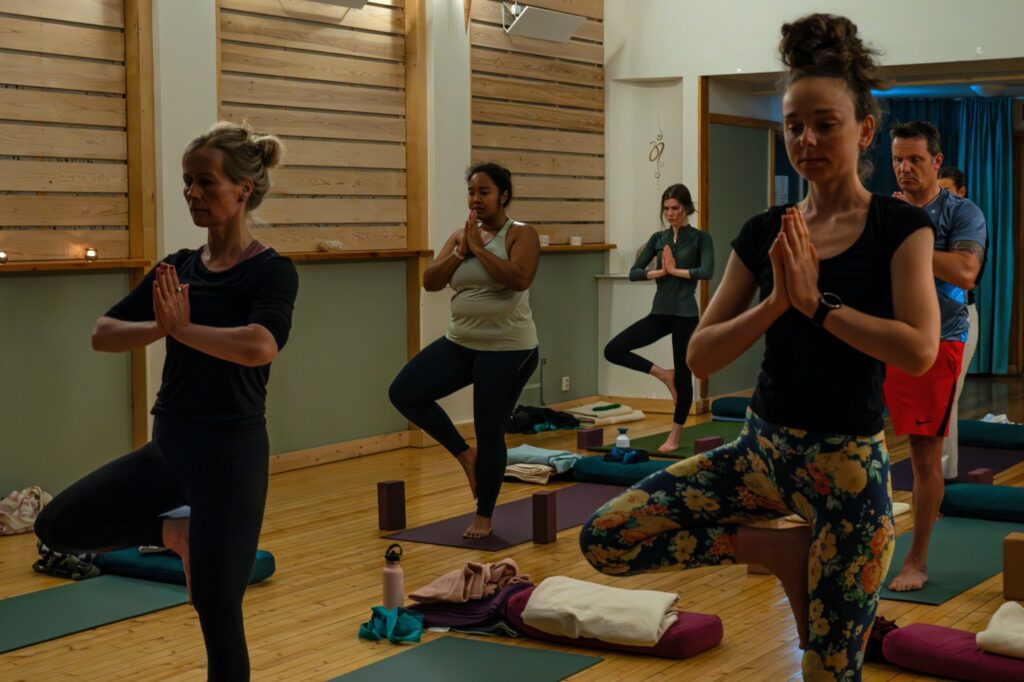
Beyond a Greeting: The Way of Life
For many, "namaste" is more than just a word or a gesture—it's a way of life. The essence of "namaste" encourages mindfulness, humility, and connection with others on a soul level. It reminds us that despite our differences, we are all interconnected through our shared humanity and divine essence.
Whether you use "namaste" as a greeting or an expression of gratitude, the word carries a beautiful intention. It invites us to approach others with kindness, respect, and a recognition of the light within us.
The Cultural Significance of Namaste
As "namaste" has spread to different parts of the world, it’s essential to maintain respect for its cultural and spiritual origins. The word, rooted in the traditions of Hinduism, Buddhism, and other South Asian belief systems, holds a sacred place in these cultures. For those using "namaste" outside of its original context, understanding its history and significance can help preserve its meaning and ensure that it is used with mindfulness.
In India, "namaste" is a spiritual greeting and a symbol of cultural identity. For generations, it has been a way to show respect to others, whether in religious ceremonies, social interactions, or everyday life. As the word becomes more widely used, it is essential to acknowledge and honor its roots in these traditions.
The Global Appeal of Namaste
In today's interconnected world, "namaste" has gained global appeal because of its simplicity and ability to convey peace, respect, and connection. It has become a part of the vocabulary in many countries, especially within yoga, meditation, and mindfulness communities. While its usage may vary depending on cultural context, the core message is honoring the divine within each person.
Conclusion: Namaste as a Bridge
"Namaste" bridges cultures, individuals, and spiritual and material worlds. Its widespread use reflects a growing appreciation for mindfulness, mutual respect, and acknowledging our shared humanity. Whether spoken in a yoga class, at the start of a conversation, or simply as a mindful way to connect with others, "namaste" invites us to honor one another in the most profound way possible.
The next time you say "namaste," take a moment to reflect on its deeper meaning. Let it remind you of the light within yourself and others and the shared connection that links us all. Namaste.
Here you can read my blog post about What is Yoga.
Here your can read my blog post about Best Yoga Practices for Different Stages of Life.
Introduction
Yoga is an ancient practice that encompasses physical, mental, and spiritual disciplines aimed at achieving balance and harmony in life. It has deep roots in Indian philosophy and has evolved over thousands of years into a comprehensive system of well-being and self-realization. In today's fast-paced world, yoga has gained popularity as a means to relieve stress, improve physical health, and attain inner peace. This article aims to explore the multifaceted nature of yoga, delving into its history, principles, benefits, and modern-day relevance.
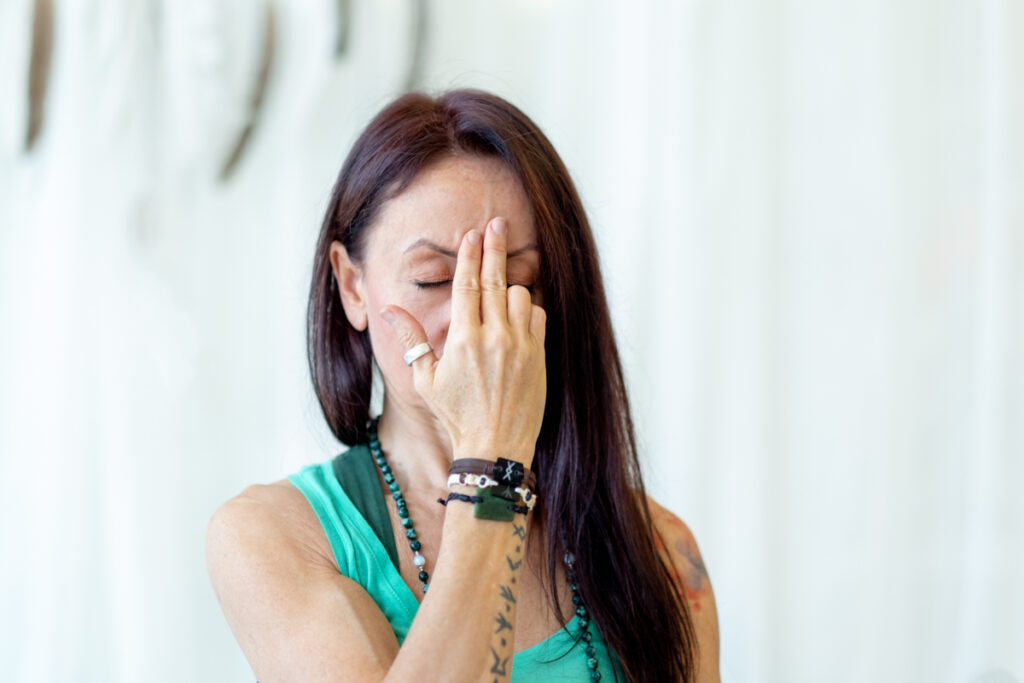

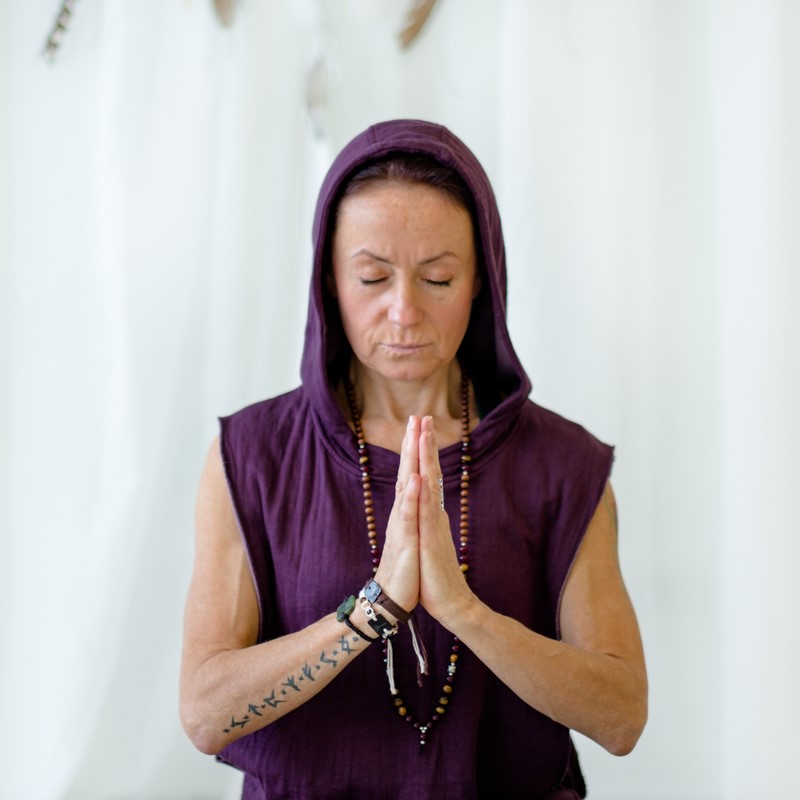
Historical Origins of Yoga
The word "yoga" is derived from the Sanskrit root "yuj," which means to yoke or unite. Its ancient origins can be traced back to the Indus Valley civilization, where archaeological evidence suggests the practice of yoga dates back over 5,000 years. However, it was the ancient Indian sage Patanjali who systematized the practice of yoga in his "Yoga Sutras," providing a philosophical framework for understanding the mind and achieving self-realization.
Patanjali's classical eight-limbed path of yoga, known as "Ashtanga Yoga," outlines a comprehensive system for personal development. It includes ethical principles (yamas and niyamas), physical postures (asanas), breath control (pranayama), sensory withdrawal (pratyahara), concentration (dharana), meditation (dhyana), and ultimately, spiritual absorption (samadhi). This holistic approach to yoga emphasizes the interconnectedness of body, mind, and spirit.
The Principles of Yoga
At its core, yoga is founded on a set of principles that guide practitioners toward holistic well-being. The practice of yoga seeks to cultivate self-awareness, compassion, and harmony within oneself and with the world. The principles of yoga are deeply rooted in ancient wisdom and have enduring relevance in modern society.
One of the fundamental principles of yoga is Ahimsa, or non-violence. This principle encourages practitioners to embody kindness and compassion toward oneself and others, fostering a sense of interconnectedness and harmony. Similarly, Satya, or truthfulness, advocates for practicing honesty and authenticity in thoughts, words, and actions. These principles, along with others such as Asteya (non-stealing), Brahmacharya (moderation), and Aparigraha (non-attachment), form the ethical foundation of yoga practice.
The Physical Aspects of Yoga
In the West, yoga is often associated with physical postures or asanas, which have gained immense popularity as a form of exercise and stress relief. These postures are designed to stretch, strengthen, and balance the body, promoting flexibility, muscular endurance, and overall physical well-being. From gentle restorative poses to dynamic and challenging sequences, yoga offers a wide range of practices suitable for individuals of all ages and abilities.
The practice of yoga postures is not merely about physical exercise; it is also a means of cultivating mindfulness and presence. By focusing on the breath and bodily sensations during asana practice, practitioners can develop a heightened sense of body awareness and mental clarity. This integration of movement and mindfulness sets yoga apart as a holistic discipline that nurtures the body-mind connection.
Breath Work and Meditation
In addition to physical postures, breath work, or pranayama, is an integral component of the yoga practice. Pranayama techniques involve conscious control of the breath to regulate energy flow, calm the mind, and enhance vitality. Deep, intentional breathing can induce relaxation, reduce stress, and promote mental clarity, making pranayama a valuable tool for achieving balance and emotional well-being.
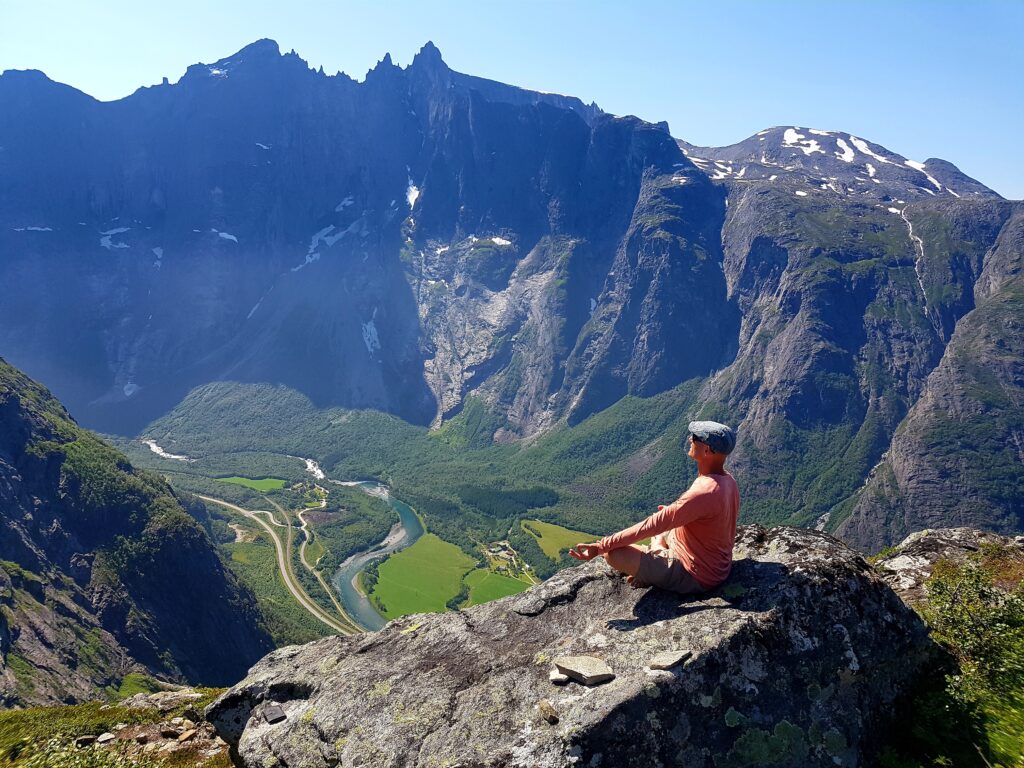
Meditation, the practice of focusing the mind and cultivating inner awareness, is another cornerstone of classical yoga. Through meditation, practitioners can gain insight into the workings of the mind, cultivate emotional resilience, and experience moments of profound stillness and tranquility. Numerous studies have highlighted the psychological benefits of meditation, showing its capacity to reduce anxiety, improve attention, and foster a sense of inner peace.
Yoga Beyond the Mat: Mindfulness and Daily Life
While the physical and mental benefits of yoga are often associated with the practice of postures, breathwork, and meditation, the essence of yoga extends far beyond the confines of a yoga mat. Yoga encourages practitioners to embody mindfulness in their daily lives, cultivating present-moment awareness, resilience, and compassion.
The practice of mindfulness, a central tenet of yoga, involves paying attention to the present moment with openness and curiosity. By integrating mindfulness into everyday activities, individuals can reduce stress, enhance focus, and savor life's experiences more fully. Simple practices such as mindful breathing, conscious eating, and gratitude journaling exemplify how yoga can be integrated into daily routines to foster well-being and emotional balance.
Yoga as a Spiritual Path
In its traditional context, yoga is not merely a set of physical exercises or relaxation techniques; it is a spiritual path aimed at self-realization and transcendence. The ultimate goal of yoga is to unveil the innermost nature of the self, transcending the limitations of the ego and realizing one's interconnectedness with the universe.
Spirituality in yoga is often expressed through devotion (bhakti), knowledge (jnana), and selfless action (karma). These paths provide different avenues for spiritual growth, allowing individuals to connect with the divine, seek wisdom, and serve others with love and compassion.
Yoga and Modern Science
In recent decades, the practice of yoga has garnered increasing interest from the scientific community, leading to numerous studies exploring its effects on physical and mental health. Research has demonstrated that yoga can have profound physiological and psychological benefits, including reduced stress, improved cardiovascular health, enhanced cognitive function, and alleviation of chronic pain.
Moreover, the integration of yoga with modern therapeutic approaches has given rise to practices such as yoga therapy, which applies yogic principles and techniques to support individuals in managing various health conditions. From depression and anxiety to chronic pain and post-traumatic stress disorder, yoga therapy has shown promise in promoting holistic well-being and addressing complex health challenges.
Yoga in the Modern World
As the pace of modern life accelerates and the prevalence of stress-related health issues rises, the appeal of yoga as a holistic practice for well-being continues to grow. Yoga has transcended cultural and geographical boundaries, becoming a global phenomenon that offers a pathway to physical, mental, and emotional balance.
In addition to traditional yoga studios and retreat centers, yoga is increasingly integrated into diverse settings, including schools, workplaces, hospitals, and community organizations. This trend reflects a growing recognition of the multifaceted benefits of yoga and its capacity to promote resilience, reduce burnout, and foster a culture of well-being in various spheres of life.
Moreover, the accessibility of online yoga platforms and virtual classes has further expanded the reach of yoga, enabling individuals to engage in practice from the comfort of their homes. This democratization of yoga instruction has made the practice more inclusive and adaptable to diverse lifestyles and needs, reflecting its enduring relevance in a rapidly evolving world.
Conclusion
In conclusion, yoga is a profound and multifaceted practice that encompasses physical, mental, and spiritual dimensions. Rooted in ancient wisdom and philosophy, yoga offers a holistic path to well-being, self-awareness, and inner transformation. Its principles, including mindfulness, ethical conduct, breath work, and meditation, provide a blueprint for living with greater harmony and compassion.
As yoga continues to evolve and adapt to modern contexts, its impact on individual and collective well-being becomes increasingly salient. From enhancing physical health and mental resilience to fostering a deeper sense of connection and purpose, the practice of yoga holds enduring relevance in our quest for holistic well-being and self-realization. Whether on the mat, in daily life, or the depth of spiritual inquiry, yoga offers a transformative journey toward balance, wholeness, and inner peace.
Here is the YouTube video if you want to try my 10-minute Grounding yoga at your home.
Spain is a perennial favorite among yoga retreat participants and holidaymakers for a multitude of reasons, each contributing to its enduring popularity as a top travel destination.
And here is why:
Stunning Landscapes:
Spain's landscapes and natural beauty are as diverse as they are breathtaking, offering a wide array of experiences for nature lovers and outdoor enthusiasts alike. From pristine beaches along the Mediterranean coast to rugged mountains and lush forests, Spain's scenery is nothing short of spectacular.
Beaches:
Spain is famous for its stunning coastline, which stretches for thousands of kilometers along the Mediterranean Sea, the Atlantic Ocean, and the Bay of Biscay. From the vibrant beaches of the Costa del Sol to the secluded coves of the Balearic Islands, Spain offers something for everyone. Whether you're looking to soak up the sun, swim in crystal-clear waters, or enjoy water sports such as surfing and snorkeling, Spain's beaches are the perfect destination.
Mountains:
Spain is famous for its stunning coastline, which stretches for thousands of kilometers along the Mediterranean Sea, the Atlantic Ocean, and the Bay of Biscay. From the vibrant beaches of the Costa del Sol to the secluded coves of the Balearic Islands, Spain offers something for everyone. Whether you're looking to soak up the sun, swim in crystal-clear waters, or enjoy water sports such as surfing and snorkeling, Spain's beaches are the perfect destination.
National Parks:
Spain is home to several stunning national parks and protected areas that showcase the country's diverse flora and fauna. The Picos de Europa National Park in northern Spain is known for its dramatic limestone peaks, deep gorges, and lush forests, while the Doñana National Park in Andalucia is a UNESCO World Heritage Site renowned for its wetlands and birdwatching opportunities. Other notable parks include the Sierra de Grazalema Natural Park, the Tablas de Daimiel National Park, and the Caldera de Taburiente National Park in the Canary Islands.
Nature Reserves:
Beyond its national parks, Spain is dotted with nature reserves and protected areas that preserve its natural beauty and biodiversity. The Cabo de Gata-Níjar Natural Park in Andalucia is one such example, boasting rugged coastal cliffs, hidden beaches, and volcanic rock formations. The Ordesa y Monte Perdido National Park in the Pyrenees is another gem, offering pristine wilderness, alpine meadows, and stunning waterfalls.
Climate:
With its Mediterranean climate, Spain enjoys mild winters and long, sunny summers, making it an ideal destination for sun-seekers year-round. Whether you're lounging on the beaches of the Balearic Islands or exploring the historic streets of Barcelona, you're sure to enjoy the pleasant weather that Spain has to offer.
Hiking The Thrilling Caminito del Ray
One of the highlights of our retreat was the opportunity to explore the rugged beauty of the Caminito Del Ray trail. Led by experienced guides, we embarked on a journey of discovery, navigating cliffs and winding pathways with awe and reverence.
Nestled amidst the rugged landscapes of Andalucia, Spain, lies one of the world's most exhilarating hiking trails: the Caminito del Rey. This awe-inspiring pathway winds its way through the breathtaking El Chorro Gorge, offering intrepid adventurers a once-in-a-lifetime opportunity to experience the raw beauty of nature from dizzying heights.
Originally built in the early 20th century to provide maintenance access for workers at nearby hydroelectric plants, the Caminito del Rey gained notoriety for its perilous conditions and hair-raising reputation. For decades, the trail fell into disrepair, earning it the nickname "the world's most dangerous walkway" and attracting thrill-seekers from around the globe eager to test their mettle.

In recent years, efforts have been made to restore and renovate the Caminito del Rey, transforming it from a perilous pathway into a safe and accessible hiking trail. Today, visitors can embark on a guided journey along the trail, marveling at the stunning vistas and vertigo-inducing views that have made the Caminito del Rey a bucket-list destination for adventurers everywhere.
The journey along the Caminito del Rey begins with a scenic walkway suspended high above the rushing waters of the Guadalhorce River. As hikers traverse the narrow pathway carved into the sheer cliffs of the gorge, they are treated to panoramic views of the surrounding countryside, with glimpses of soaring eagles and cascading waterfalls adding to the sense of wonder and excitement.
The Caminito del Rey offers an unforgettable adventure that will be remembered for a lifetime. Whether you're a seasoned hiker seeking a new challenge or a nature enthusiast eager to experience the wonders of Andalucia's rugged landscapes, the Caminito del Rey is sure to leave you breathless in more ways than one.
Yoga Retreat Center
Our Yoga retreat center is located 3 km from the charming village of El Gastor.



The accommodations are rooms in villas with views of the mountain, air conditioners, and heaters and there is wifi inside all the buildings. Villas have a bedroom with a double bed, a living room with a fold-out sofa, an open kitchen, a bathroom, a balcony, and a pool. The 19 rooms can be single, double, triple, or quadruple occupancy and have air conditioning, heaters, and free wifi.
We have at our disposal a comfortable yoga studio with all the necessary equipment such as yoga mats, blocks, blankets, and bolsters.



Enjoying Nourishing Vegetarian Delights
At our yoga retreat, we believe that nourishing the body with wholesome, vegetarian food is an essential part of the holistic experience. Inspired by the bounty of Andalucia's fertile lands and the rich tradition of Mediterranean cuisine, our meals are crafted with care using locally sourced ingredients, ensuring that each bite is a celebration of flavor, freshness, and vitality.
Drawing upon the abundance of local produce, our menu showcases the vibrant flavors and vibrant colors of Andalucia's culinary heritage. From the rich, golden hues of locally produced olive oil to the earthy sweetness of ripe tomatoes and peppers, each ingredient is carefully selected to create dishes that delight the senses and nourish the soul.
Our meals are designed to provide a balance of nutrients and flavors, offering a variety of plant-based proteins, whole grains, and fresh vegetables to fuel your body and support your practice. Whether you're indulging in a hearty bowl of lentil soup, savoring a colorful salad bursting with seasonal vegetables, or enjoying a comforting plate of vegetable paella, our menu is sure to satisfy even the most discerning palate.
Our vegetarian menu is not only delicious—it's also designed to inspire and empower you to make healthier choices long after you leave our retreat. By showcasing the incredible diversity and versatility of plant-based ingredients, we hope to ignite a passion for cooking and eating well that will continue to nourish your body, mind, and spirit for years to come.
Improve and deepen your yoga practice!
With multiple sessions each day, you have the opportunity to practice yoga more extensively than you might in your routine. This extended practice can help you refine your poses, build strength and flexibility, and deepen your understanding of yoga techniques. The expertise of an experienced yoga teacher can help you refine your alignment, explore advanced practices, and overcome any challenges you may encounter.
Retreats often incorporate workshops or discussions on yoga philosophy, history, and spirituality. This exploration can deepen your understanding of the philosophical principles underlying yoga and inspire you to integrate these teachings into your practice and daily life.
You can try and practice different styles of yoga.
Practicing and learning different styles of yoga can greatly benefit you in finding the right practice for different days or stages of life in the future in several ways:
- Understanding Your Preferences: Trying out various yoga styles allows you to understand what resonates most with you. You might find that you prefer the dynamic flow of Vinyasa one day, while on another day, you crave the grounding stillness of Yin yoga. This understanding helps you choose the most suitable practice for your current needs.
- Adaptability: Life is dynamic, and your needs and energy levels can vary from day to day. Learning different styles of yoga equips you with a range of techniques and practices that you can adapt to suit your mood, energy level, or specific circumstances. For example, if you're feeling stressed, you might opt for a calming practice like Restorative yoga, whereas if you need an energy boost, you might choose a vigorous Ashtanga practice.
- Targeted Benefits: Each yoga style offers unique benefits for the body, mind, and spirit. By exploring different styles, you can identify which practices address specific needs or goals. For instance, if you're recovering from an injury, you might focus on gentle, therapeutic styles like Iyengar yoga. If you're seeking spiritual growth, you might gravitate towards practices that incorporate meditation and breathwork, such as Kundalini yoga.
- Holistic Approach: Combining different yoga styles allows for a more holistic approach to your practice. You can integrate elements of strength-building, flexibility, mindfulness, relaxation, and breathwork into your routine, ensuring that you address all aspects of your well-being.
- Preventing Plateaus: Practicing the same style of yoga exclusively can sometimes lead to plateaus in your practice or personal growth. Exploring different styles challenges your body and mind in new ways, preventing stagnation and facilitating continuous growth and evolution.
- Life Transitions: As you navigate different life stages or transitions, your yoga needs may evolve. For example, during periods of high stress, you might prioritize practices that promote relaxation and stress relief, while during times of change or uncertainty, you might seek grounding and stability through your yoga practice. Having familiarity with various styles allows you to adapt your practice to support you through different life circumstances.
Pilates helps Yogis engage their core!
Yoga and Pilates don’t have to be two separate practices. They can work together hand by hand, to help strengthen your core, lengthen your side body, avoid injury, and improve your alignment. Pilates’s focus on building and engaging a strong core can propel one's yoga practice into new realms.
Pilates is a comprehensive form of exercise that can help you become stronger by targeting core muscles, improving muscle endurance, enhancing flexibility, promoting good posture, and supporting overall functional strength and mobility.
Pilates is known as a "workout," and yoga as a "practice"; however, the irony here is that, to improve at anything, we have to practice, and when we practice well both Pilates and yoga can be exceptional workouts.
Our retreat Pilates teacher is Kaia Heinleht from Estonia.
More information about her in the Estonian language is here.
Kaia is one of the backbones, and foundations of Estonian Pilates, having been introduced, practiced, and taught Pilates for over twenty years. During all these years, she has consistently developed her skills at various international training under-recognized Pilates master teachers such as Kelly McKinnon, Debora Lessen, and Amy Taylor Alpers. The last training was the Kathy Corey Postgraduate Mentor Program in Germany in 2018.



In addition to Pilates, in recent years Kaia has been improving herself in the field of osteopathy, and in 2015 she started studying kinesiology TFH (Touch For Health). Relying on her acquired knowledge and practice of thousands of hours in the fields listed above, Kaia has developed her physical education training course. Physiotherapists and rehabilitation specialists working in the Estonian medical system have improved their knowledge under his guidance.
Our retreat Yoga teacher and hiking guide is Pille Mitt.
Read more about Pille here.
You can book your next yoga & hiking retreat in Spain here.
Life is a journey marked by various stages, each presenting its own set of challenges, joys, and opportunities for growth. Just as our bodies and minds evolve over time, so too should our approach to self-care and well-being. Yoga, an ancient practice that harmonizes the body, mind, and spirit, offers a versatile toolkit that can adapt to the changing needs of individuals at different stages of life. From the exuberance of youth to the wisdom of old age, here's how yoga practices can be tailored to match the unique demands of each stage.
Youth: Embracing Energy and Exploration
In the vibrant phase of youth, energy flows abundantly, and the spirit of exploration is at its peak. This is a time of discovering one's identity, pursuing passions, and laying the foundation for the future. Yoga can serve as a valuable companion in this journey, providing a holistic approach to physical health, mental clarity, and emotional balance.
Incorporating Yoga into Daily Life
For young adults navigating the fast-paced demands of modern life, integrating yoga into daily routines can offer grounding amidst the chaos. Simple practices such as Sun Salutations (Surya Namaskar) or energizing flows like Vinyasa yoga can invigorate the body and sharpen focus. Additionally, pranayama techniques, such as Kapalabhati (skull-shining breath) or Bhastrika (bellows breath), can enhance vitality and mental clarity, allowing young individuals to approach challenges with vigor and resilience.
Yoga Retreats for Self-Discovery
Yoga retreats tailored for young adults provide an immersive experience that combines physical activity, mindfulness, and community building. These retreats often feature dynamic yoga sessions, workshops on stress management and goal setting, and opportunities for outdoor adventures. By stepping away from the distractions of daily life, participants can delve deeper into self-discovery, gaining clarity of purpose and direction for the future.
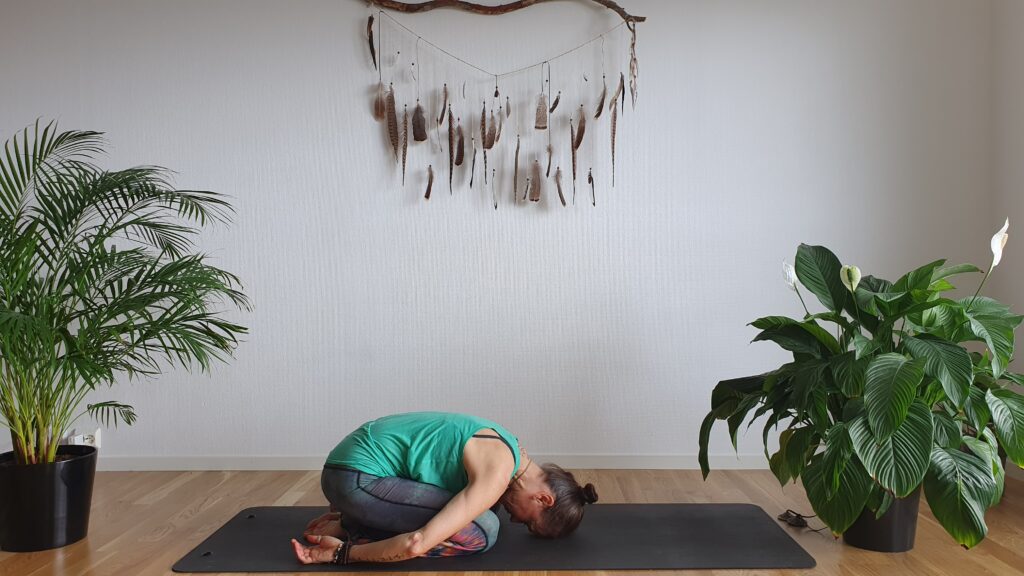
Adulthood: Balancing Responsibilities and Wellness
As adulthood brings forth a myriad of responsibilities – career, relationships, and family – finding balance becomes paramount. Yoga offers a sanctuary amidst the hustle and bustle of daily life, promoting physical well-being, mental resilience, and emotional equilibrium.
Mindful Movement for Stress Relief
In the midst of hectic schedules, incorporating gentle yoga practices can alleviate stress and tension accumulated throughout the day. Restorative yoga poses, such as Child's Pose (Balasana) or Legs-Up-the-Wall (Viparita Karani), encourage deep relaxation and release muscular tension. Moreover, mindfulness-based practices, such as Yoga Nidra or guided meditation, foster mental clarity and emotional stability, enabling individuals to navigate challenges with grace and composure.
Yoga for Connection and Community
In the whirlwind of adult life, cultivating meaningful connections and nurturing relationships is essential for holistic well-being. Yoga communities provide a supportive environment where individuals can come together to practice, share experiences, and foster a sense of belonging. Whether through attending group classes, workshops, or yoga retreats focused on personal growth and connection, adults can find solace in the company of like-minded individuals, strengthening bonds and deepening connections with oneself and others.
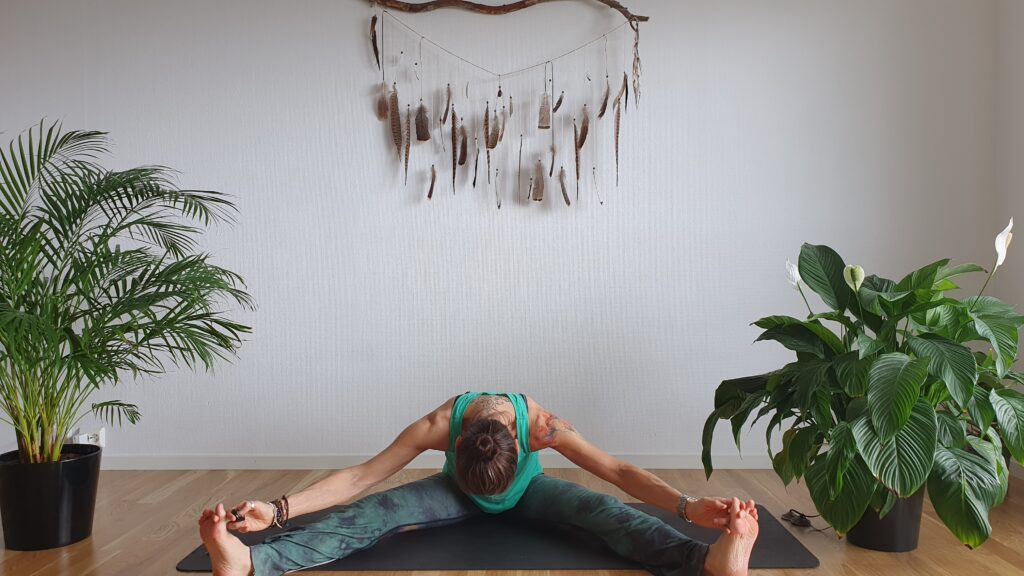
Middle Age: Cultivating Strength and Resilience
Middle age heralds a period of transition, marked by shifts in priorities, roles, and perspectives. As individuals navigate the ebb and flow of life's currents, yoga serves as a steadfast anchor, fostering physical vitality, mental fortitude, and emotional resilience.
Strength-Building Yoga Practices
As the body undergoes subtle changes with age, maintaining strength and flexibility becomes increasingly important. Yoga practices that focus on strength-building, such as Ashtanga or Power Yoga, help to tone muscles, improve balance, and enhance overall physical resilience. Additionally, incorporating props such as blocks, straps, or bolsters can provide support and accessibility, allowing individuals to adapt their practice to suit their evolving needs.
Yoga Retreats for Renewal and Reflection
Yoga retreats tailored for individuals in middle age offer a sanctuary for renewal and reflection amidst life's transitions. These retreats often feature a blend of dynamic and restorative yoga practices, mindfulness exercises, and contemplative activities aimed at fostering self-awareness and inner growth. By stepping away from familiar routines and immersing oneself in a supportive environment, participants can gain clarity, renew their sense of purpose, and emerge with a renewed sense of vitality and purpose.
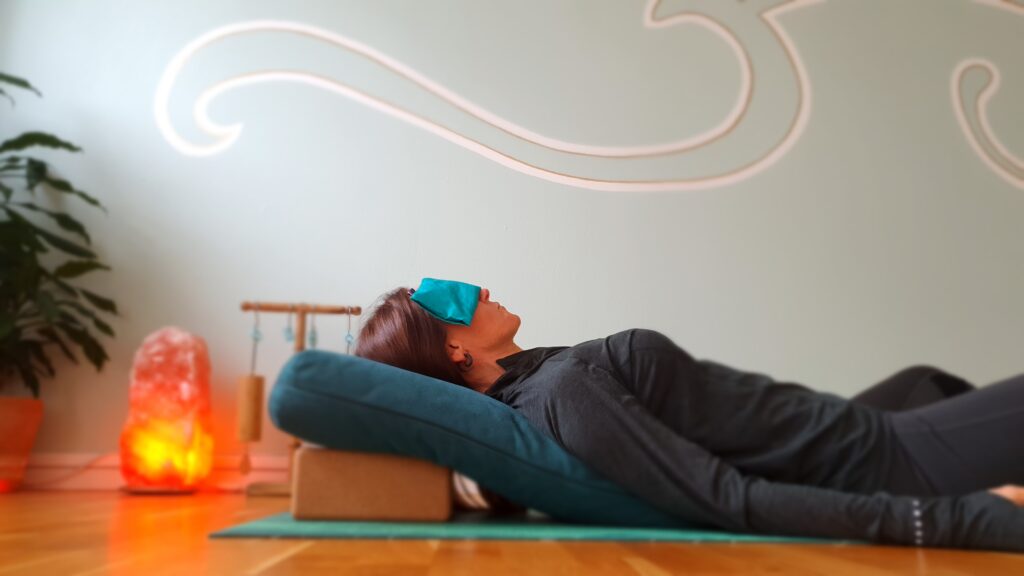
Old Age: Nurturing Mind, Body, and Spirit
In the golden years of old age, prioritizing holistic well-being becomes paramount. Yoga offers a gentle yet powerful means of nurturing the mind, body, and spirit, promoting vitality, serenity, and spiritual fulfillment.
Gentle Yoga Practice for Mobility and Comfort
As the body naturally slows down with age, gentle yoga practices provide a safe and effective way to maintain mobility, flexibility, and overall well-being. Chair yoga, gentle Hatha yoga, and Yin yoga are particularly well-suited for older adults, offering modified poses and ample support to accommodate varying levels of mobility and comfort. These practices help to alleviate stiffness, improve circulation, and promote relaxation, allowing individuals to age gracefully and with dignity.
Yoga Retreats for Wellness and Wisdom
Yoga retreats catered to older adults offer a nurturing space for wellness and wisdom, celebrating the richness of life's journey and the wisdom accrued over the years. These retreats often feature gentle yoga practices, guided meditation, and opportunities for reflection and storytelling. By embracing the present moment with gratitude and acceptance, participants can cultivate a deep sense of inner peace, contentment, and spiritual fulfillment, embracing the fullness of life's experiences with grace and equanimity.
In conclusion, yoga is a timeless companion that adapts and evolves alongside individuals at every stage of life. Whether in the exuberance of youth, the responsibilities of adulthood, the transitions of middle age, or the serenity of old age, yoga offers a holistic pathway to well-being, resilience, and self-discovery. By embracing the transformative power of yoga practices tailored to match the unique needs of each stage, individuals can navigate life's journey with vitality, grace, and inner harmony.
This article provides insights into how yoga practices can be adapted to meet the needs of individuals at different stages of life, from youth to old age. Through mindful movement, connection, and self-reflection, yoga offers a holistic approach to well-being that supports physical health, mental clarity, and emotional resilience at every stage of life.
The mother-daughter relationship is one of the most complex and profound connections in human existence. As adult daughters navigate the challenges of life, the bond with their mothers takes on new dimensions, requiring a delicate balance of independence and closeness. In the pursuit of fostering a healthy connection, unconventional approaches, such as yoga and hiking retreats, can provide a unique and transformative space for quality time and personal growth.
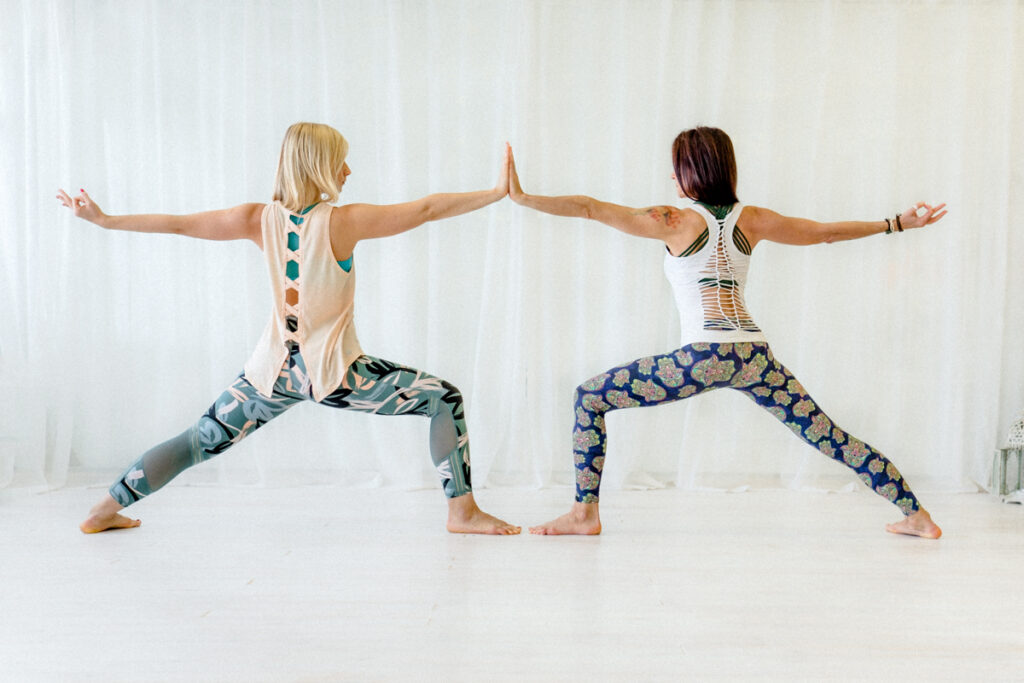
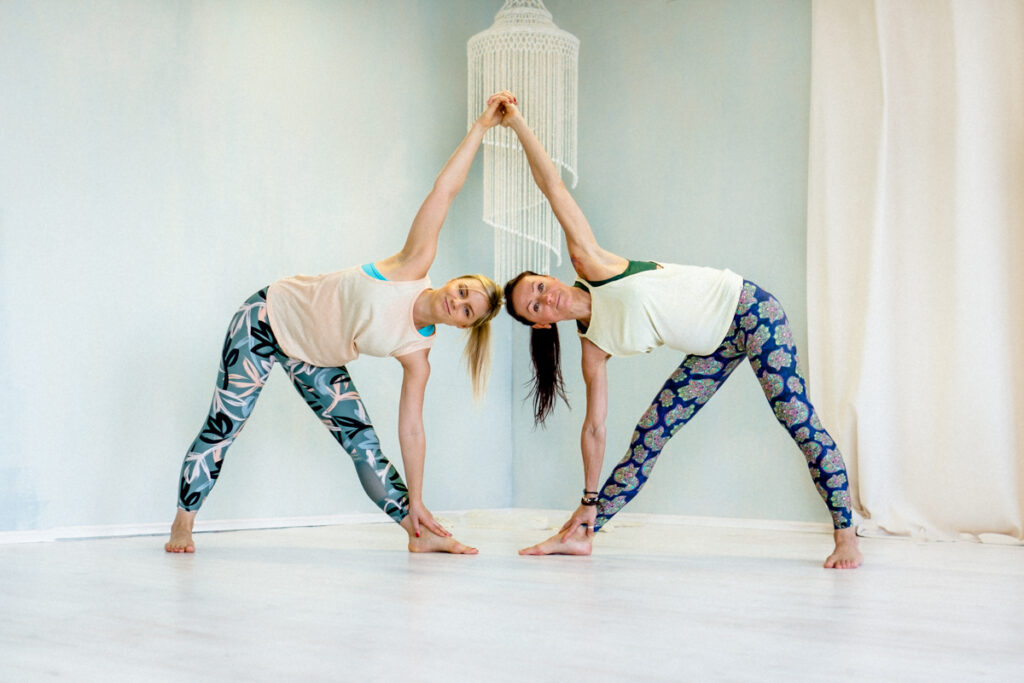
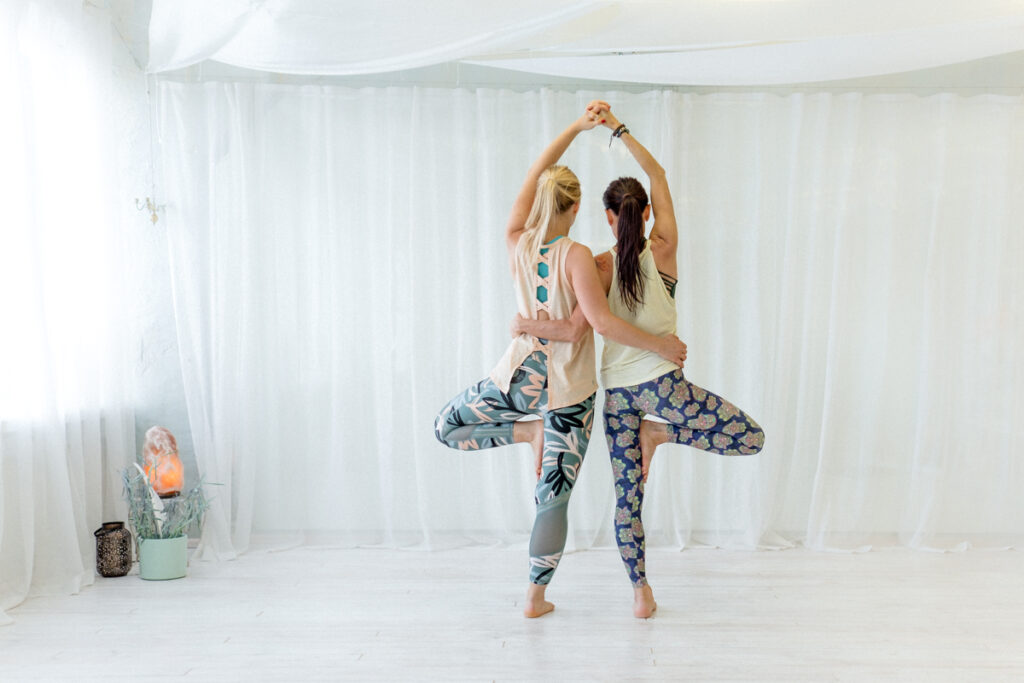
The Dynamics of Mothers-Adult Daughters Relationships:
The dynamics between mothers and adult daughters can be intricate, influenced by a lifetime of shared experiences, evolving roles, and individual growth. As daughters enter adulthood, the relationship often shifts from a more parent-child dynamic to a friendship grounded in mutual respect and understanding. However, this transition isn't always seamless, and maintaining a healthy connection requires effort from both parties.
Mothers and Adult Daughters Quality Time: A Catalyst for Connection:
Finding quality time for meaningful interactions can be challenging in our fast-paced world. This is where the idea of a yoga and hiking retreat comes into play. These retreats offer a purposeful escape from the demands of daily life, creating a serene environment conducive to self-reflection and strengthened connections.
Yoga for Mind-Body Harmony:
Yoga is not just a physical exercise but a holistic practice promoting mental and emotional well-being. Participating in yoga sessions can provide mothers and daughters with a shared experience, fostering a sense of unity. Practicing mindfulness and deep breathing can open communication channels, creating a space for vulnerability and understanding.
Hiking for Shared Adventure:
Embarking on a hiking and yoga retreat introduces an element of shared adventure and challenges that can strengthen the bond between mothers and adult daughters. Physical activity not only promotes health but also encourages teamwork and mutual support. Overcoming obstacles together on the trail can be a metaphor for navigating life's challenges side by side.
The Healing Power of Nature:
A yoga and hiking retreat surrounded by the beauty of nature provides an ideal setting for healing and rejuvenation. Away from the distractions of daily life, mothers and daughters can reconnect with themselves and each other. The serene backdrop becomes a canvas for shared memories, fostering a deeper understanding of each other's perspectives.
Reflection and Communication:
Retreats offer a unique opportunity for reflection and open communication. Mother and daughter can engage in meaningful conversations about their journeys, aspirations, and challenges. The retreat becomes a safe space for honest and authentic dialogue, strengthening their emotional bond.
Deepening Connections Through Shared Learning:
A yoga and hiking retreat focuses on physical activities and provides opportunities for shared learning. Engaging in workshops or classes together, whether learning new yoga poses or gaining wilderness survival skills during hikes, can be an enriching experience. This shared acquisition of knowledge creates a sense of camaraderie, encouraging mutual growth and understanding.
Empowering Each Other:
One of the beautiful aspects of a yoga and hiking retreat is the encouragement to step out of your comfort zone. Mothers and daughters can find themselves in unfamiliar situations, facing physical challenges or exploring aspects of their personalities previously untapped. This shared journey of self-discovery and empowerment can bring about a newfound appreciation for each other's strengths and vulnerabilities.
Digital Detox for Authentic Connection:
In the age of constant connectivity, a retreat provides a rare opportunity for a digital detox. Away from the screens and distractions, mothers and daughters can immerse themselves in the present moment, fostering authentic connections. Unplugging from the virtual world allows for deeper conversations, enhanced emotional bonding, and a more profound shared experience.
Creating Lasting Memories:
The retreat becomes a canvas for creating lasting memories. Whether it's the breathtaking sunrise during a morning yoga session or the sense of accomplishment after completing a challenging hike, these shared moments become touchstones in the mother-daughter relationship. The memories forged in the retreat environment can serve as a source of strength and nostalgia, reinforcing their unique bond.
Practicing Gratitude:
A key element of many yoga retreats is the practice of gratitude. Taking time each day to reflect on the positive aspects of life can shift perspectives and create a more positive atmosphere. Encouraging mothers and daughters to express gratitude towards each other during the retreat fosters a sense of appreciation and acknowledgment, strengthening the foundation of their relationship.
Sustaining the Connection Beyond the Retreat:
The impact of a yoga and hiking retreat doesn't end when the journey concludes. Encouraging mothers and daughters to integrate the lessons learned into their daily lives ensures that the positive changes experienced during the retreat become lasting. Implementing mindfulness practices, engaging in physical activities, and maintaining open communication are ways to sustain the strengthened connection long after the retreat.
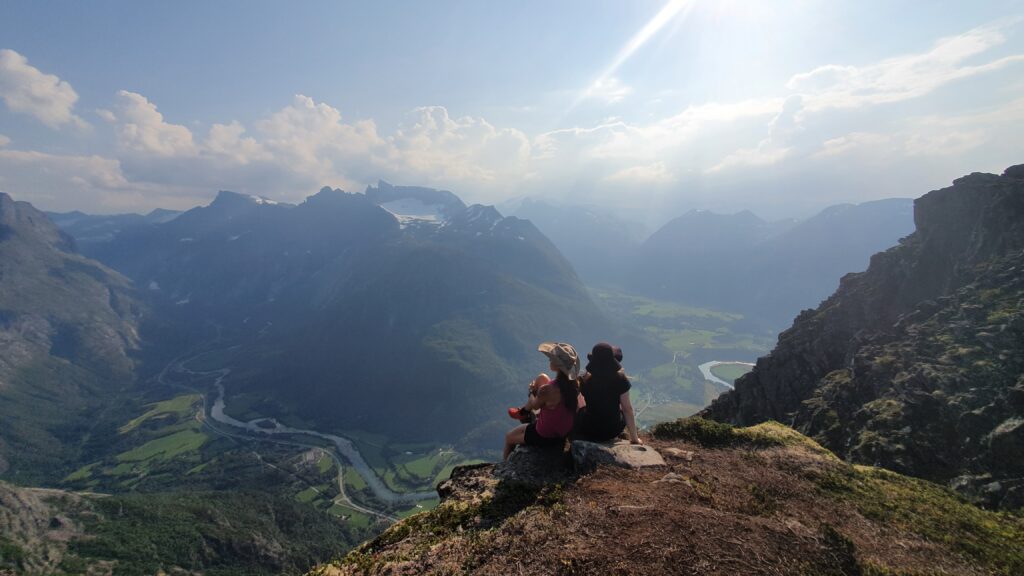
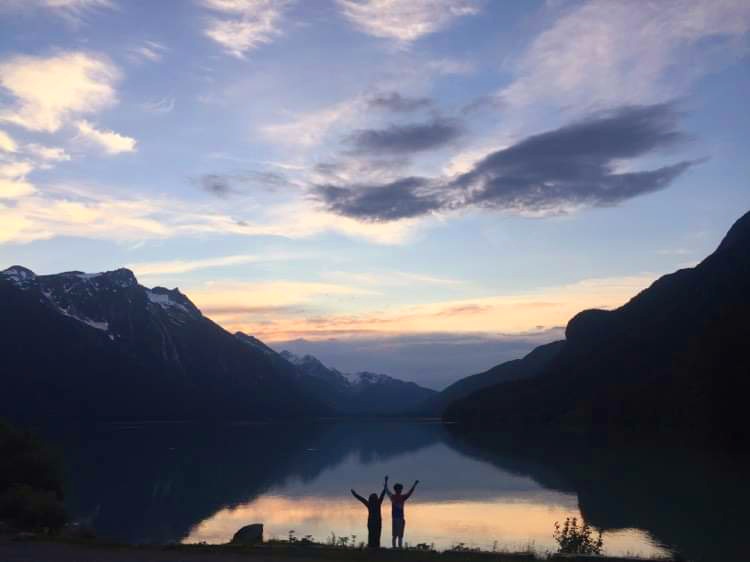
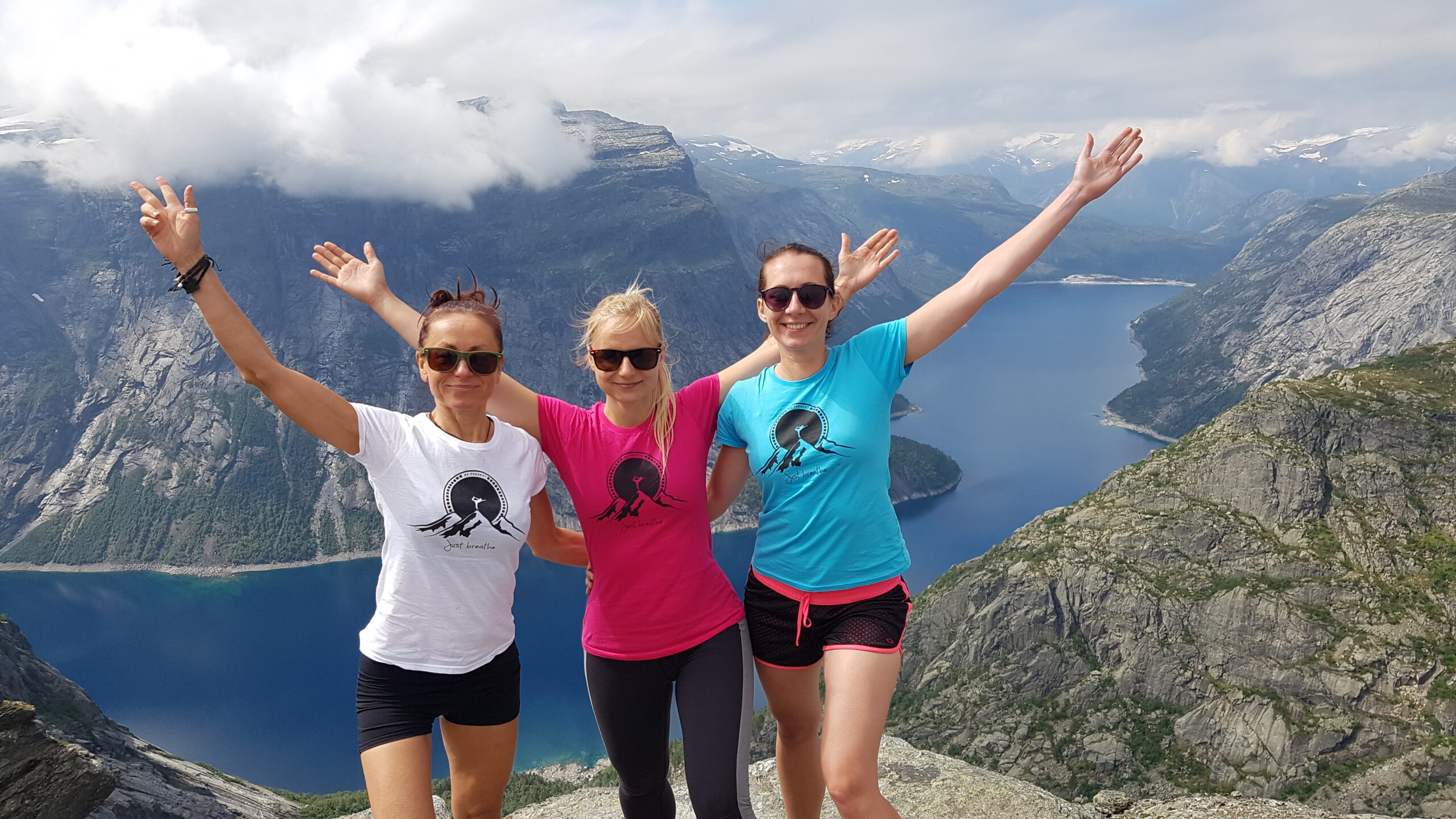
Conclusion:
The importance of quality time cannot be overstated in the pursuit of a healthy mother-adult-daughter relationship. The yoga and hiking retreat serves as a transformative experience, blending physical activity, mindfulness, and the beauty of nature to create an environment conducive to personal growth and strengthened connections. By embracing these unconventional approaches, mothers and daughters can embark on a journey of self-discovery and shared experiences, fostering a bond that withstands the test of time.
Discover our selection of yoga and hiking retreats here.
Read a blog post, "What is yoga retreat..." here.
In Pranayama, breathing is elevated to a controlled, extended process of exhalation and inhalation. This generates the cosmic energy of prana, the life force that provides the strength, power, and vitality required for any activity - B.K.S. Iyengar
Pranayama is generally defined as breath control. Although this interpretation may seem correct because of the practices involved, it does not convey the full meaning of the term. The word pranayama is comprised of two roots: 'prana' plus 'ayama'. Prana means vital energy or life force. It is the force that exists in all things, whether animate or inanimate. Although closely related to the air we breathe, it is more subtle than air or oxygen. Therefore, pranayama should not be considered as mere breathing exercises aimed at introducing extra oxygen into the lungs. Pranayama utilizes breathing to influence the flow of prana in the nadis or energy channels of the pranamaya kosha or energy body.
The word Yama means to control and is used to denote various rules and codes of conduct. However, this is not the word that is joined to prana to form pranayama; the correct word is Ayama which has far more implications. Ayama is defined as an extension or expansion. Thus, the word pranayama means extension or expansion of the dimension of prana. The techniques of pranayama provide the method whereby the life force can be activated and regulated to go beyond one's normal boundaries or limitations and attain a higher state of vibratory energy and awareness.
Four aspects pf pranayama:
- Inhalation or pooraka
- Exhalation or rechaka
- Internal breath retention or antar kumbhaka
- External breath retention or bahir kumbhaka
The different practices of pranayama involve various techniques that utilize these four aspects of breathing.
The mind and breath
It is said that the mind and the breath are one's constant companions. Where there is a breath, there the mind is focused, and where there is an active mind, so is the breath focused. Pranayama seeks to quiet the mind, controlling it through the deep and rhythmic flow of inhalations and exhalations.
The sound of the breath
The pranayamic breath has a sound of its own: Soham. The sound of the inhalation is "as" and that of the exhalation is "ham". "Soham" has been interpreted as "He, I am and I am He". During pranayama, concentration is drowned solely in the action of the breath, and it is this attentive awareness of the breath that leads to the art of dhyana, or meditation.
The art of inhaling not only focuses the mind on the breath, but also brings one into contact with their essence, or soul. With the retention of the breath during the inhalation, the soul becomes wedded to the body. This is the divine union of the soul with our nature or body. During the process of exhalation, the soul re-enters into an unfathomable space. The mind dissolves and the divine marriage of Prakriti, the body, and Purusha, the soul, occurs.
Just as the practice of asanas, or poses, is seen as yoga in action, developing the individual's knowledge of the body, mind, and consciousness, the practice of pranayama is said to lead on toward the path of love minus lust, which is known as Bhakti Marga. Among the eight limbs of yoga, pranayama is therefore seen as the heart of the practice.
Contra-indications:
- Pranayama should not be practiced during illness
- Some pranayamas are not recommended for beginners
Time and place of the practice
The best time to practice pranayama is down when the body is fresh and the mind is very few impressions. If this is not possible, another good time is just after sunset. Try to practice regularly at the same time and place each day. Do not be in a hurry. Practice before eating in the morning or wait for at least three to four hours after meals before starting pranayama. Practice in a quiet, clean, and pleasant room, which is well-ventilated but not draughty. Pranayama should be performed after shatkarmas and asanas, and before meditation practice.
There are many different pranayamas:
- Nadi Shodana Pranayama. The word Nadi means channel or flow of energy and Shodana means purification. Nadi Shodana, therefore, means that practice that purifies the Nadis.
- Ujjayi Pranayama. The word ujjjayi means victorious, it is also known as psychic breath.
- Sheetali Pranayama which means cooling breath.
- Sheetkari Pranayama which means hissing breath.
- Brahmari Pranayama which means humming bee breath.
- Bhastrika Pranayama which means bellows breath.
- Kapalbhati Pranayama which means frontal brain cleansing breath. Kapalbhati is the practice that brings a state of light or clarity to the frontal region of the brain.
- Moorchha Pranayama which means swooning or fainting breath.
- Surya Bheda Pranayama which means vitality-stimulating breath.
Benefits of pranayama:
- Decreases stress
- Improves sleep quality
- Increases mindfulness
- Helps lower blood pressure
- Improves lung function
- Improves immune system
The blog post about powerful yogic breathing for beginners is here.
Nadi Shodana pranayama for beginners 12-minute YouTube video is here.
Nadi Shodana Pranayama with antar kumbakha 17 minutes youtube video is here.
You can start your yogic journey here.
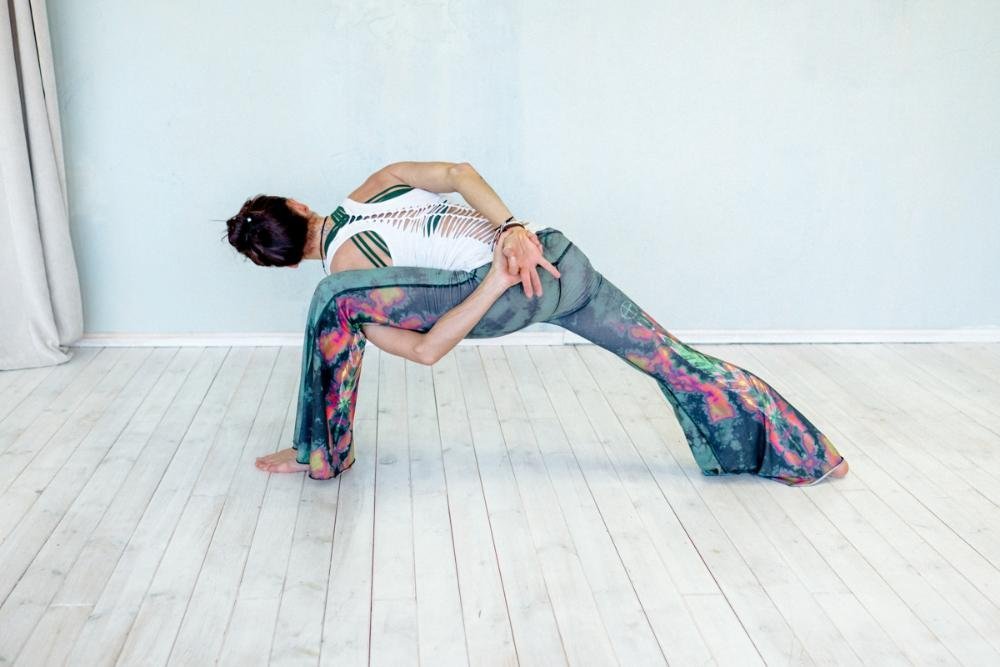
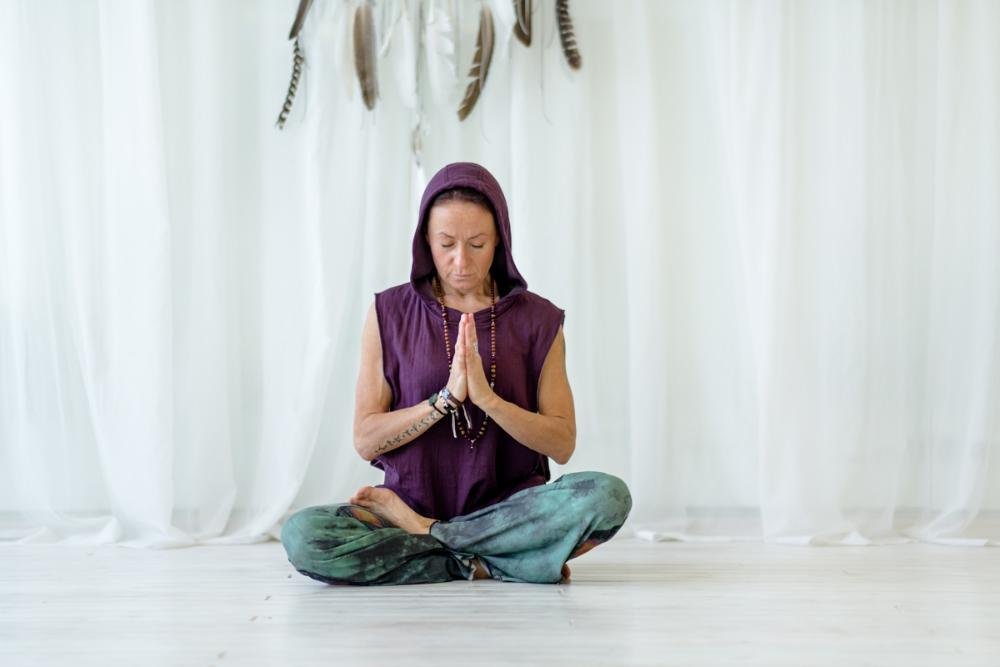
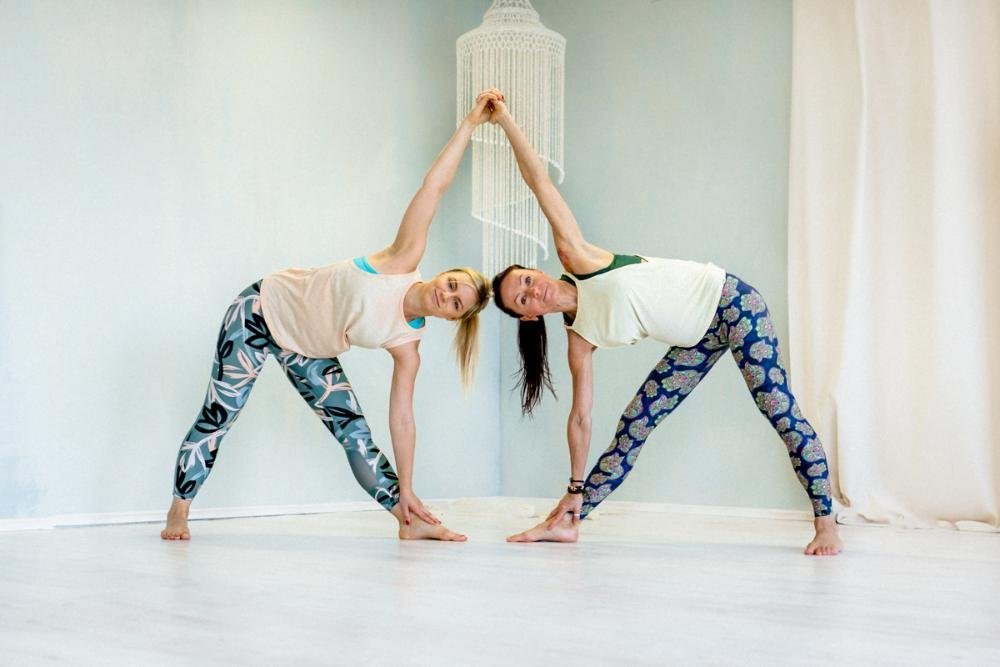
Unlock the secrets to a successful yoga journey on the 10 common mistakes to avoid when beginning your practice. Start your yoga practice on the right foot, cultivating self-awareness and embracing the transformative power of yoga.
Yoga is a beautiful and transformative practice that can bring physical and mental well-being into your life. Whether you're new to yoga or considering it a try, it's essential to be aware of common mistakes that beginners often make. By avoiding these pitfalls, you can embark on your yoga journey with confidence and success. Here are ten of the biggest mistakes to steer clear of:
1. Choosing the Wrong Class or Style
Not all yoga classes or styles are the same. Choosing the wrong one for your needs and preferences can lead to a lack of interest or motivation. Explore different styles and teachers to find what resonates with you. Determine what you want to achieve through yoga. Understanding your goals will help you select the most appropriate style. Take into account your current fitness level. Some yoga styles are more physically demanding than others. If you are new to exercise, you may want to start with a gentler style and gradually progress. You can read more about different styles of yoga here.
2. Being Impatient
Yoga is about the journey, not just the destination. Rushing through poses or expecting immediate results can lead to frustration. Patience is key.
3. Inconsistency
Yoga benefits from regular practice. Inconsistent or sporadic practice won't yield the same results as routine practice. Set a schedule that works for you and try to stick to it.
The act of setting aside time for yoga practice can instill discipline and mindfulness, making it easier for beginners to maintain the habit over the long term. The community and support from fellow practitioners in a yoga class can help beginners stay committed to their practice by providing a sense of belonging and accountability.
4. Comparing Yourself to Others
Yoga is a personal journey, and everyone progresses at their own pace. Constantly comparing yourself to others can lead to frustration and defeat the purpose of yoga's mindfulness and self-acceptance aspects.
5. Not Listening to Your Body
Disregarding the signals your body is giving you can be a significant mistake. If something doesn't feel right or causes pain, stop or modify the pose. Your body knows best.
6. Breathing Mindlessly
Yoga is closely connected to your breath. Breathing mindlessly or holding your breath can reduce the effectiveness of your practice and increase tension. Click here to can learn yogic breathing.
7. Pushing Too Hard
Overambitious beginners might push themselves too hard, trying to achieve advanced poses before mastering the basics. This can lead to physical strain and injury.
8. Skipping Warm-Up and Cool-Down
Neglecting to warm up before starting your practice and cool down at the end can lead to muscle strains and injuries. Always prepare your body and allow it to recover properly.
9. Ignoring Proper Alignment
Neglecting to pay attention to proper alignment in poses can result in discomfort, strain, and potential injuries. Learning and maintaining proper alignment is essential for a safe practice.
10. Not Embracing the Mind-Body Connection
Yoga is not just a physical practice; it's a mental and spiritual one. Neglecting the mindfulness and meditation aspects can limit the holistic benefits of yoga.
In conclusion, starting a yoga practice is a beautiful journey that can enhance your physical and mental health. By avoiding these common mistakes, you can build a strong foundation for your yoga practice, reduce the risk of injury, and fully embrace the transformative power of yoga. Remember that yoga is a personal journey, and there's no rush to achieve perfection. Embrace the process, practice patience, and enjoy the many physical and mental benefits that yoga has to offer.
To avoid these mistakes, consider starting your yoga journey under the guidance of a qualified teacher or by following instructional videos and resources designed for beginners. A structured and well-informed approach will help you build a strong foundation and ensure a safe and fulfilling practice.
Click here to find a step-by-step guide on how to start your yogic lifestyle.
This awesome yoga and hiking retreat between the fjords of Norway is a real adventure and mental detox, that will nourish your body, soul, and spirit.
The yoga retreat days will start with walking or driving to the local yoga studio for morning yoga and pranayama. The walk is around 7 minutes from Thon Hotel or 10-20 minutes from your accommodation. If your accommodation is not so close, you will be together with other people and have a car to drive to the yoga studio. Don't worry if you don't drive, you will be accommodated together with someone who does. We use rental cars that have insurance included. The rental car fee is included in the price.
Molde is a city and municipality in Møre and Romsdal county, Norway. It is a small town by the Moldefjord with a population of 26822. Molde is a very calm and relaxing city, famous for its amazing views. It is surrounded by fjords and is close to several remarkable hiking trails and viewpoints. Book your flight to Molde, Årø airport.
We will pick you up from the Molde airport on the day of arrival, but it is best to arrive on the 16.45 or 17.00 flight from Oslo. It is not a problem when you arrive earlier on that day or by bus. Transfer from the airport or bus station is included in the price only on that day. On the first day, we have a welcome dinner all together at 18.00.
Our yoga classes will be suitable for all levels, from beginners to advanced practitioners. We will practice vinyasa flow yoga in the morning to energize our body and mind, and yin yoga in the evening to relax and restore our muscles. We will also incorporate meditation and breathwork to enhance our awareness and connection with nature.
Our hiking trails will vary from easy to moderate, depending on your preference and fitness level. We will hike for about 3-6 hours a day, exploring different landscapes and viewpoints. We will see waterfalls, meadows, villages, and wildlife along the way.
You can choose your 7 days retreat date and make your booking by clicking here.
5 days retreat by clicking here.
Weekend retreat here.

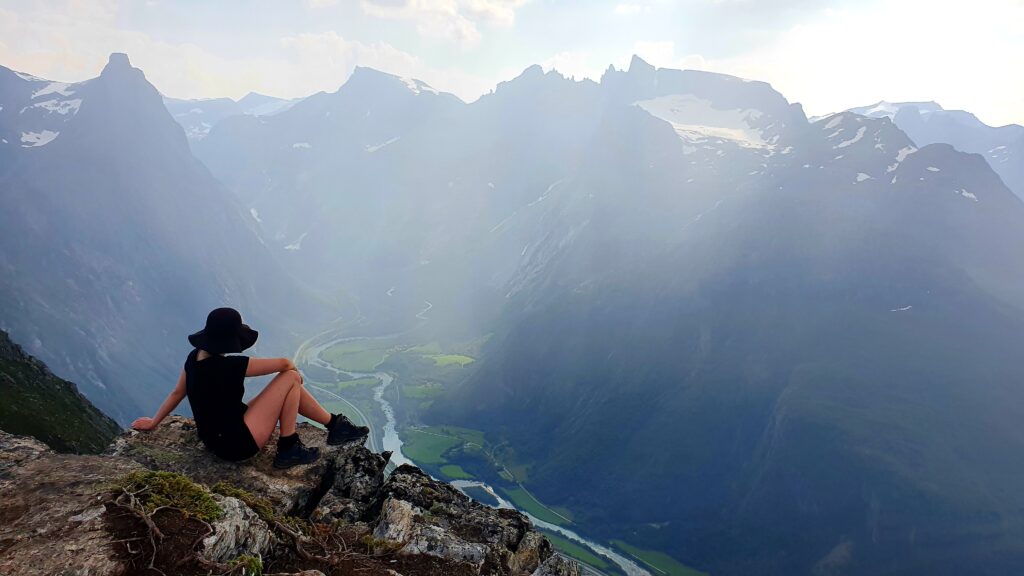
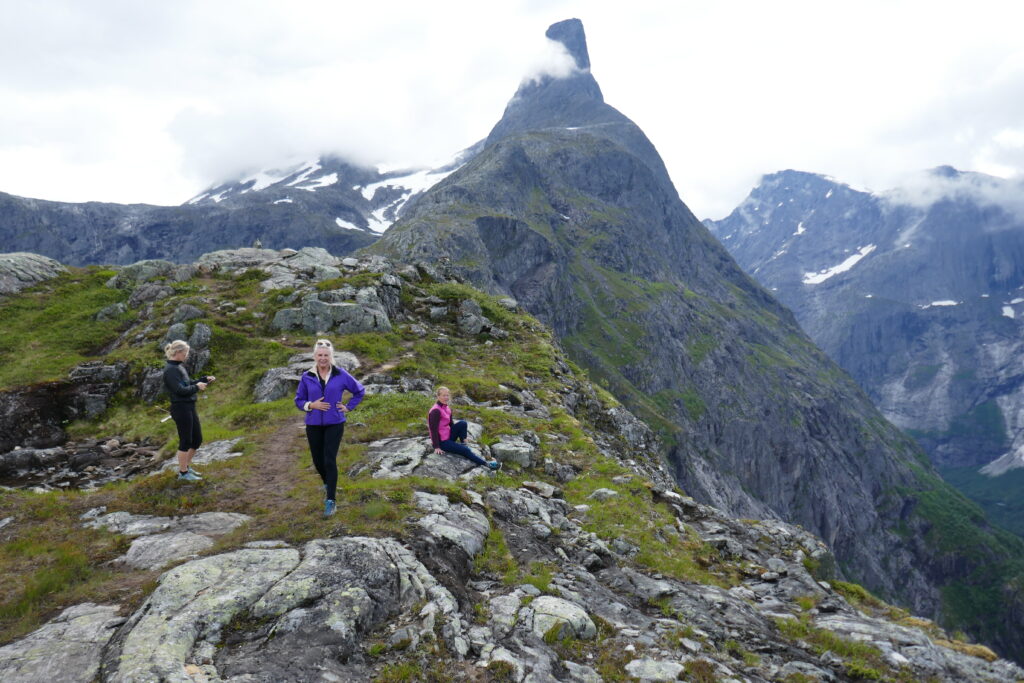
Yoga retreat program:
Day 1, Friday
Arrival day. Pick up from the airport, settle into accommodation, introduce the program, meet other guests, dinner.
Day 2
Energizing morning yoga session, breakfast, pack lunch.
Hiking Tusenårsvarden 523 m.a.s.l. or Varden viewpoint 407 m.a.s.l. 6-10 km.
After the hike, we return to the yoga studio for an afternoon yin yoga session and dinner.
Day 3
Strengthening morning yoga session, followed by breakfast, packed lunch, and snacks.
Troll Church 484 m.a.s.l., consists of three exciting limestone and marble grottos with underground streams and a beautiful waterfall. On the surface, to the west of the uppermost cave, there is a lake with white marble "jetties". Braver hikers can swim in the mountain lake.
The mountain behind the Trolls' church is very distinctive, with jagged points and spires. Sometimes we hike only to the caves and lake, 8 km, but with real adventurers, we will hike further over the mountain ridge (832 m.a.s.l.) and make a loop back to the cave. Guests can choose how long of a hike they want this day. After the hike, we return for a restorative yoga session and a delicious meal.
Day 4
Morning yoga, followed by breakfast and pack lunch.
Jendemsfjellet 633 m.a.s.l. is a mountain near Molde with a breathtaking 360-degree view over the fjords and mountains. We can choose between the shorter or longer trail, 4-6 km. Afternoon yoga session followed by a delicious meal in the accommodation.
Day 5
Morning yoga, breakfast, and packed lunch followed by a ferry trip and driving to Trollstiegen.
Trollstiegen or the Troll ladder/road is a famous mountain road with narrow curves and sharp hairpin bends. The road has 11 hairpin curves and an elevation of 850 m. Every bend has its name. The road is narrow with a gradient of 9 % but passing pockets have been incorporated and traffic normally flows without a problem. An impressive bridge of natural stone carries it across the Stigfossen waterfall, one of the most beautiful waterfalls in Norway. Stigfossen is an unregulated and powerful waterfall with a total height of 240 m, from which 180 m is almost a single drop.
Guests can choose if they want to drive up or hike. Kløvstien hike - the path is preserved as a cultural heritage, and a lot of effort has been put into maintaining the path. Stone steps and chains are making challenging parts more accessible and safer.
Day 6
After morning yoga, breakfast, and packed lunch, we take off on a road trip to the Atlantic Road.
The Atlantic Road has National Tourist Route status, and the entire stretch between Bud and Kristiansund is one continuous experience packed with coastal scenery, culture, and history. The road that crosses this “infamous stretch of the ocean” was hailed as the world’s best road trip by the British newspaper The Guardian. In 2006. The 8.3 km (5 miles) road, with 8 bridges of a total length of 891 meters, is built on several small islands and skerries and is spanned by eight bridges and several landfills.
Sjurvarden, 667 m.a.s.l. is the mountain that stretches out to the sea, giving a powerful view of Hustadvika, the Atlantic Ocean, and the coastal landscape from Sunnmøre in the west and Smøla on Nordmøre in the north.
Day 7
We will enjoy a final morning yoga session and breakfast before guests depart.
All good things must come to an end but only till next time! We transfer you to the airport and say goodbye!
Depending on participants' comfort level and the weather, this itinerary is subject to change.
Other options for hiking are:
Misundtrappene
Mardalsfossen
Yoga retreat accommodation:
You can choose between a hotel room or a single or double bedroom in an apartment together with other retreat participants. The hotel is located in the city center and the comfortable but simple rooms include a private bathroom, shower, toiletries, and free wireless internet. You can choose between a single or a double room. The hotel's name is Thon Hotel Moldefjord, address is Storgata 40, Molde. If you want more privacy and time alone we strongly recommend you choose to stay at the hotel. If you prefer a more luxurious room, please let us know.
Accommodation in an apartment is a local home. You will share the bathroom with 2-4 other participants. Those accommodations are located in different parts of the city.
What is included:
- 6 nights accommodation
- 2 meals a day, water, tea, coffee (vegan, gluten-free options)
- 5 guided hikes
- Yoga and meditation classes
- Yoga mats and props
- Transport
- Pick up and drop off at Molde airport or ferry terminal during the arriving and leaving day
- Personal attention, motivation, care, and enthusiasm
What is not included:
- Airfare
- Dinners (dinners for an extra cost 900 NOK made by our chef)
- Insurance
- Transport from and to the airport if you arrive before the start of the retreat or wish to stay longer
Additional Information:
If you are looking for an eventful holiday with lots of yoga, fun, and mountain air, Norway is the place for you. Expect relaxed group dynamics and the opportunity to integrate more balance and health into your life.
A Youtube video about yoga and hiking Trolltindene is here.
Guided tours take you into the heart of world-renowned wilderness destinations like countless number of waterfalls, Troll Church, Atlantic Road, Romsdalseggen, or some smaller mountaintops with amazing views over the fjords. Sometimes we will have yoga, pranayama, and meditation outdoors, on the top of the mountain.
What to bring/wear:
- Backpack 25-35 L
- Waterbottle
- Wind and waterproof jacket
- Warm cardigan
- Comfortable outdoor shoes or boots
- Socks
- Sunglasses and sunscreen
- Hiking pants
- Gloves and hat
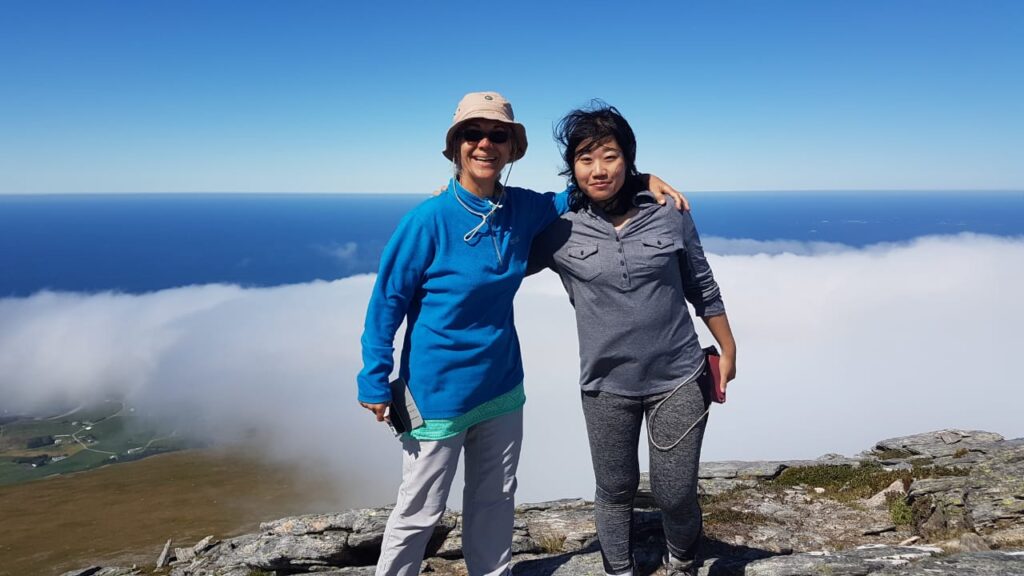
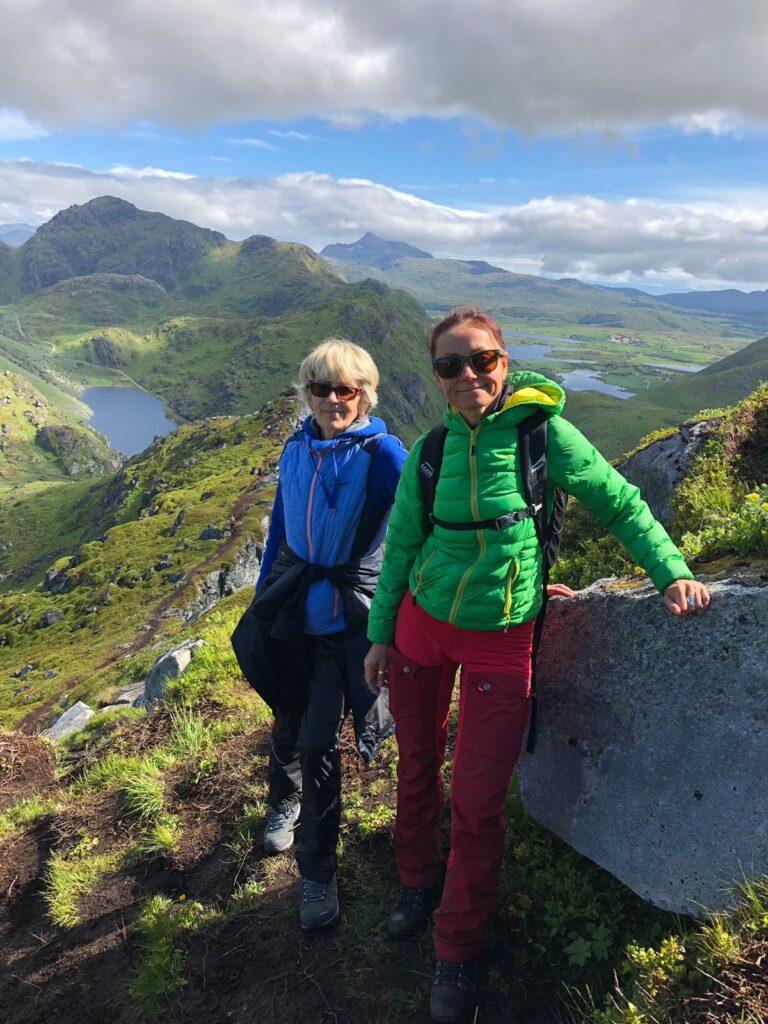
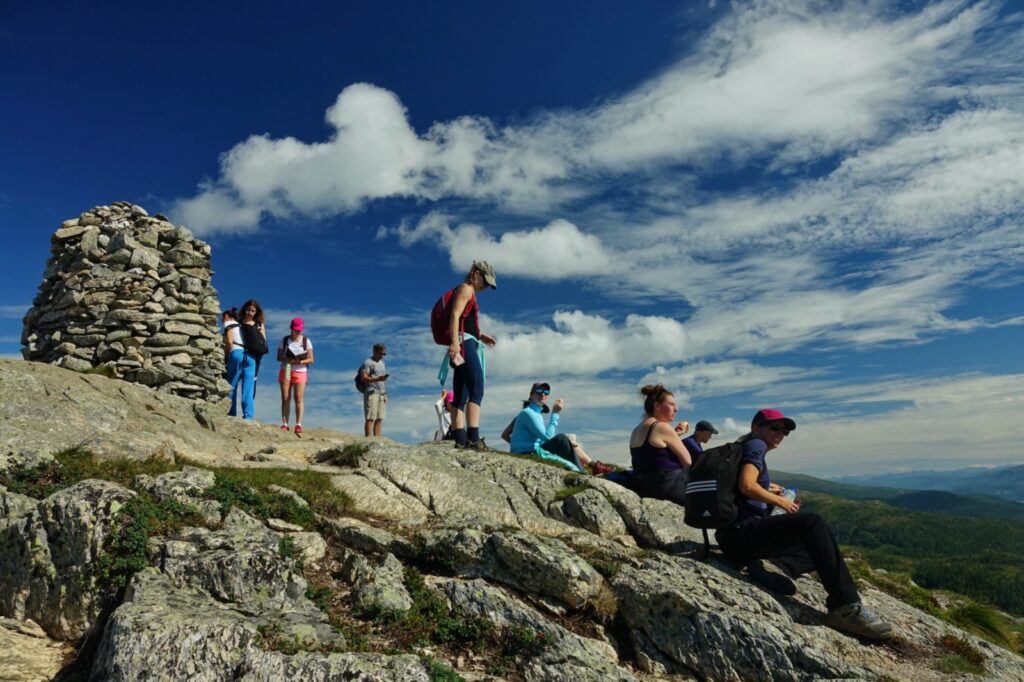
If you are ready to reconnect with nature and yourself on this amazing yoga and hiking retreat in Norway, don’t hesitate to book your spot now! Spaces are limited and filling up fast. For any questions or inquiries, please email us at mittpille@gmail.com.
You can also follow us on Instagram @yogaandhikingwithpillemitt to see more photos and stories from our past retreats.”
